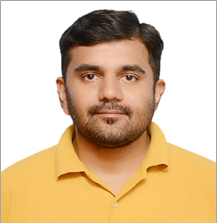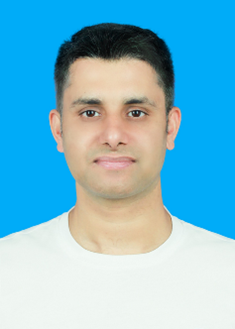Special Session 3:
Deep Learning for Medical Image Analysis and Disease Classification: Multimodal Approaches for Precision Medicine
Session Chair(s)
Muhammad Aamir, College of Computer Science and Artificial Intelligence, Huanggang Normal University, China
Uzair Aslam Bhatti, College of Information and Communication Engineering, Hainan University, Haikou, China
Nomica Choudhry, School of Information Technology, Faculty of Science, Engineering and Built Environment, Deakin University, Burwood, VIC, Australia
Aim and Scope:
Medical imaging plays a vital role in modern diagnosis, prognosis, and treatment planning. With the rapid advancement of deep learning, medical image analysis has entered a transformative era, achieving significant progress in disease detection, segmentation, and classification across multiple clinical domains. Emerging architectures such as convolutional–transformer hybrids, self-supervised learning, and multimodal fusion are driving intelligent diagnostic systems with unprecedented accuracy and reliability.
This special session aims to bring together researchers, clinicians, and industry experts to share recent advances and emerging trends in deep learning for medical image interpretation and disease classification. It welcomes contributions covering diverse imaging modalities, including MRI, CT, PET, X-ray, ultrasound, retinal OCT, and histopathology, and applications in neurology, oncology, cardiology, ophthalmology, and pathology.
By fostering interdisciplinary collaboration, the session seeks to promote interpretable, robust, and clinically deployable AI systems that advance precision medicine and improve patient outcomes.
Topics of Interest (but not limited to):
• Deep learning architectures for disease detection, segmentation, and classification
• Self-supervised, semi-supervised, and weakly supervised learning in medical imaging
• Multimodal and cross-modality fusion (imaging + clinical/omics + text data)
• Federated and privacy-preserving learning for multi-institutional collaboration
• Explainable and uncertainty-aware AI for medical diagnostics
• Domain adaptation and robustness across scanners, sites, and populations
• Lightweight and real-time models for point-of-care or mobile applications
• Benchmarks, open datasets, and challenge results (e.g., BraTS, ADNI, ISLES, CheXpert, CAMELYON)
• Clinical deployment, workflow integration, and regulatory considerations
Submission Process:
If you wish to participate in this special session--MAPM, please submit your manuscript through the ConfSync:https://confsync.cn/csae/submission and select the Section "Deep Learning for Medical Image Analysis and Disease Classification: Multimodal Approaches for Precision Medicine".We will assign your submission to Dr. Muhammad Aamir for a preliminary review. After passing the preliminary review, your manuscript will undergo a secondary review by experts. Notifications of acceptance will be issued concurrently with the main conference notifications. For any questions, please contact: info@confsync.cn.
Keynote Speaker in this Special Session:

Uzair Aslam Bhatti
Associate Professor
Hainan University,China
Speech Title:Blue Carbon Sources in Coastal Ecosystems: Insights from Earth Observation Technologies
Abstract:Change detection (CD) aims to reveal the dynamic evolution of the Earth’s surface by analyzing multitemporal remote sensing imagery, exhibiting significant application value in critical domains such as emergency management. With the continuous improvement in the spatial and temporal resolution of remote sensing imagery, traditional CD methods based on handcrafted features are facing increasing limitations. These approaches have gradually become insufficient to meet the demands of increasingly complex and diverse application scenarios. In recent years, fueled by the powerful feature representation capabilities of various network architectures, deep learning-based methods have achieved remarkable breakthroughs in the field of CD. This progress has also given rise to a diverse range of task types, including binary change detection, multiclass change detection, semantic change detection, change captioning, and change detection data synthesis. However, most existing reviews primarily focus on model architectures or supervision strategies, lacking a systematic overview from the perspective of task taxonomy. This keynote presents a task-oriented survey of deep learning-based CD methods for high-resolution remote sensing imagery. It comprehensively summarizes the progress, representative approaches, and application scenarios across different task categories, while also organizing widely used datasets and evaluation metrics. Furthermore, potential future directions are discussed to provide valuable insights for subsequent research.

Muhammad Aamir
Associate Professor
Hunaggang Normal University, China
Speech Title:Transforming Brain Tumor Diagnosis: An AI-Powered Classification System for Clinical Decision Support"
Abstract:Accurate brain tumor classification is vital for effective treatment planning, yet manual interpretation of MRI scans remains slow, subjective, and dependent on expert radiologists. This work presents an advanced deep learning framework designed to deliver highly reliable automated tumor classification, offering a practical solution for modern clinical environments. The proposed system integrates enhanced image preprocessing with multiple complementary deep learning models and a feature fusion strategy that captures richer, more discriminative information than single-model approaches. Evaluated on a diverse MRI dataset covering the major brain tumor types, the framework demonstrates superior performance with consistently high accuracy across all classes. Beyond classification, the system incorporates an automated tumor localization component, providing valuable spatial insights that support surgical planning and treatment decision-making. Its ability to deliver fast, consistent results without inter-observer variability enables significant improvements in diagnostic workflow, especially in resource-constrained or high-volume settings. With seamless integration into standard hospital imaging workflows and strong potential for telemedicine applications, this approach offers a robust and scalable solution for improving brain tumor diagnosis and supporting clinicians in delivering timely, effective patient care.
Biography:Muhammad Aamir received his Bachelor of Engineering degree in Computer Systems Engineering from Mehran University of Engineering & Technology, Jamshoro, Sindh, Pakistan, in 2008. He went on to earn a Master of Engineering degree in Software Engineering from Chongqing University, China, in 2014, and later completed his PhD in Computer Science and Technology from Sichuan University, Chengdu, China, in 2019. Currently, he is an Associate Professor in the School of Computer Science and Artificial Intelligence at Huanggang Normal University, China. With extensive research experience and a prolific publication record, Dr. Aamir has made significant contributions to various fields including pattern recognition, computer vision, medical image processing, deep learning, and machine vision. His expertise and dedication to advancing these areas have earned him recognition as a peer reviewer for numerous prestigious journals and as an organizing committee member for several international conferences.

NOMICA CHOUDHRY
Research Scholar
Deakin University,Australia
Speech Title:Forged Anomaly Detection using Advanced Deep Learning
Abstract:The rapid growth of digital content and interconnected systems has brought unprecedented opportunities, but also a surge in sophisticated forged data, tampered media, and anomalous activities that threaten security, trust, and operational integrity. Traditional rule-based and manual inspection methods are no longer sufficient to detect these evolving threats, particularly as forgeries become more subtle, diverse, and difficult to recognize. This keynote introduces an advanced deep learning framework designed to detect forged and anomalous patterns across images, videos, documents, and system logs. By combining enhanced preprocessing, multi-scale feature extraction, and intelligent fusion of deep neural representations, the proposed approach captures fine-grained irregularities that are often invisible to human observers or classical algorithms. The system demonstrates strong generalization across multiple types of forgeries, including synthetic manipulations, structural inconsistencies, and behavior-based anomalies. Beyond detection, the framework supports real-time analysis and automated alerting, making it suitable for applications in cybersecurity, digital forensics, identity authentication, and industrial monitoring. Its scalable architecture and low-latency processing enable deployment in both cloud and edge environments, ensuring broad practical relevance. This work highlights the importance of leveraging modern deep learning to safeguard digital ecosystems, offering a robust, adaptive, and interpretable solution to one of today’s most pressing technological challenges.
Biography:Dr. Nomica Choudhry is a distinguished senior IT executive and academic with a Ph.D. in Computer Engineering from Deakin University, Australia, specializing in deep learning-based anomaly detection in surveillance systems. She uniquely bridges high-level industry leadership with rigorous academic research, currently serving as Head of Operations at Blue Brackets Technologies (Australia & Pakistan), Director of Industry Liaison at International Islamic University Islamabad, and Instructor & Researcher at Military College of Signals, Rawalpindi. Dr. Choudhry has led digital transformation initiatives valued at over PKR 25 billion, implementing AI-driven systems and enterprise solutions across major projects in Pakistan, Dubai, and Australia, while simultaneously maintaining an active research portfolio with publications in prestigious venues including Applied Intelligence (Springer) and IEEE Access. Her research contributions span machine learning applications in video surveillance, wireless sensor networks, federated learning frameworks, and fault-tolerant computing systems. With over 15 years of teaching experience at leading Pakistani universities including NUML, APCOMS, and IIUI, she has mentored numerous graduate students and is recognized for exemplary teaching methodologies. Dr. Choudhry holds an MS in Computer Engineering from Kyung-Hee University, South Korea (on full scholarship), and has received multiple international awards including the Best Presentation Award at APAC, Perth, Australia, and competitive travel grants for presenting research across Australia, South Korea, India, and the UAE, making her a respected voice at the intersection of academic innovation and industry transformation.